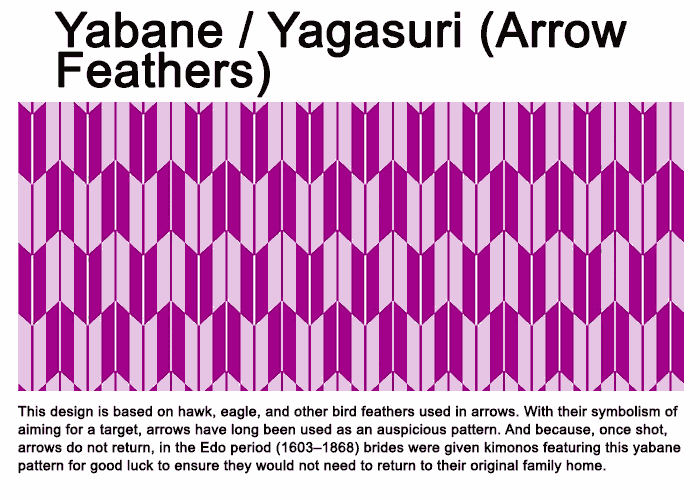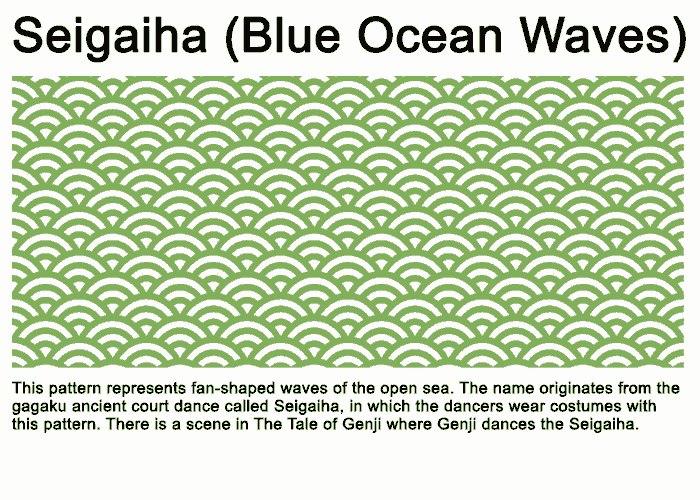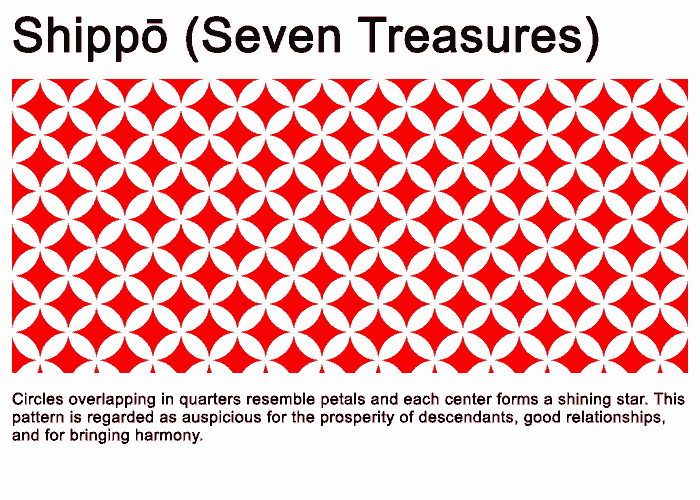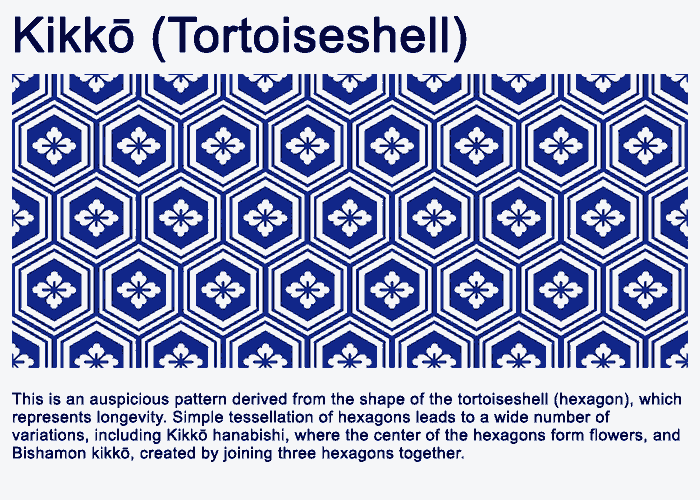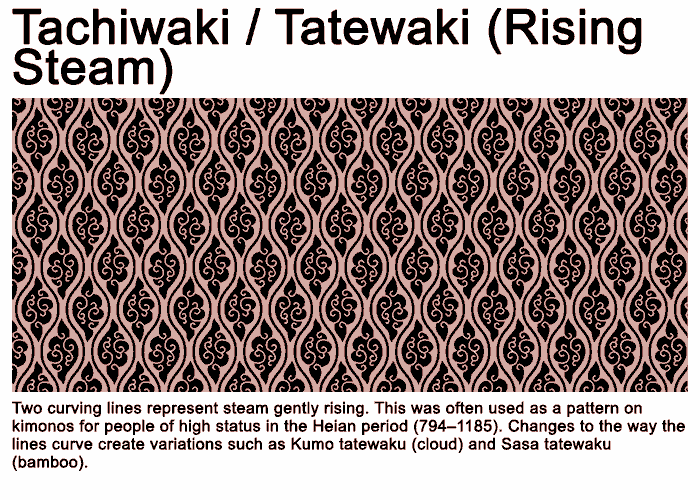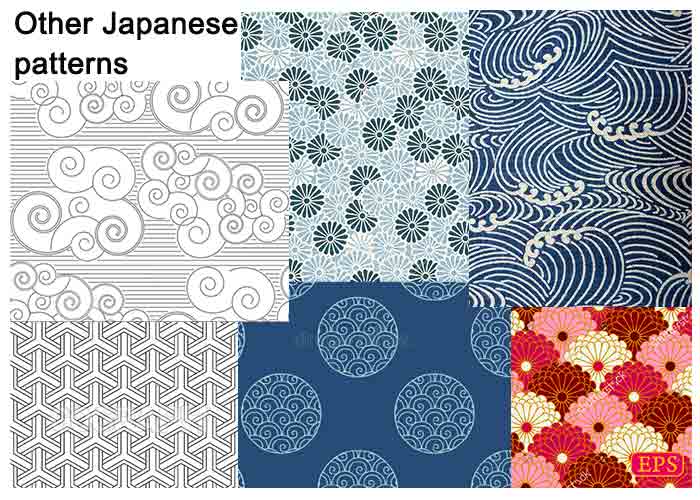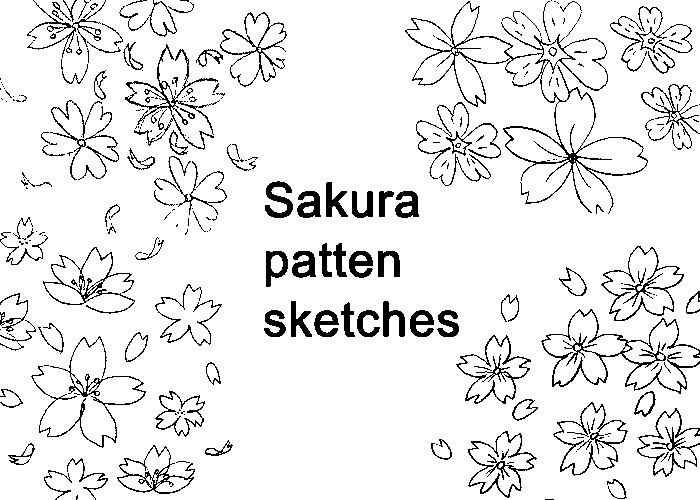The scope
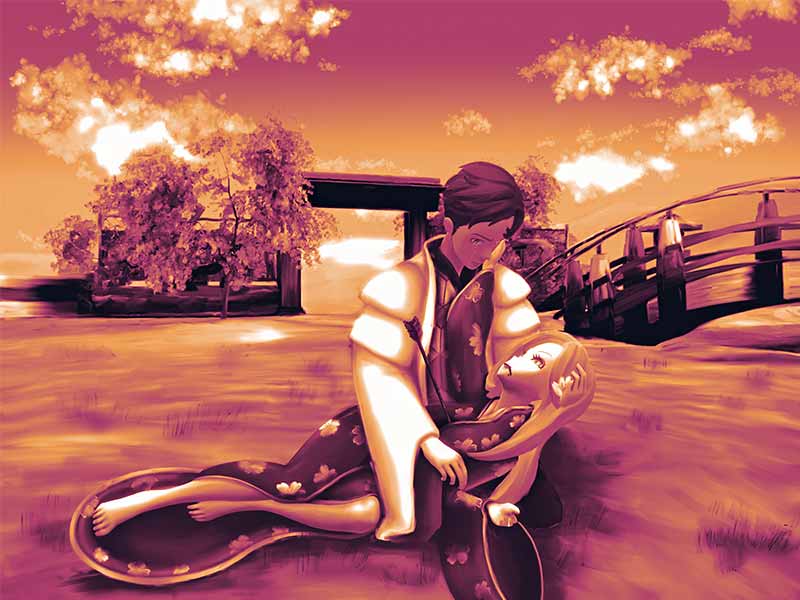
The scope
The scope
The scope
The job role of a concept artist is to help set the tone early on for a project by producing visuals. Doing this gives everyone working on the project a visual guide to the overall look and feel.
Idea generation is the method in which a concept artist(s) utilises the information from a brief, script or set of guidelines to generate a vast array of ideas. Concept artists materialise illustrations to solve problems, this is how the concept art is created.
The outcome
Portray characters in poses/scenes that reflect character growth and relationship in the story through developing scenes. This will be in the form of a story book and this will demonstrate how the scenes would play out if it were an animated film.
The scope
Brainstorm - Story theme ideas
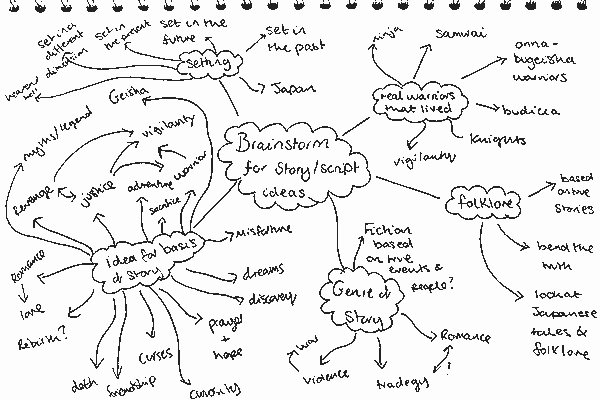
To kick off this project I needed to come up with a script that I could then later translate into a visual format. By brainstorming potential different script ideas, I was able to generate an array of possible genres for the basis of a script.
In total, I was able to materialise 7 different scripts from the brainstorming session, as well as extra research to help refine the scripts.
The story plots for the scripts can be seen below.
Story plot ideas
The scope
Environment & prop story brainstorms
Now that I had created the different scripts, I could then start to think about what the potential environment and props would be required for each of these scripts.
When doing this I take into consideration a number of things; genre of the story, time period, mood, colour, composition, lighting and so forth.
Getting an idea of this in the early development stages, helps later to bring the concept art in materialization with more ease. Not on this, but it demonstrates that you are able to problem solve, which is the sole purpose of a concept artists job.
(At this stage I realised script number 3 was not a viable idea, therefore did not carry out a brainstorm for this script.)
The scope
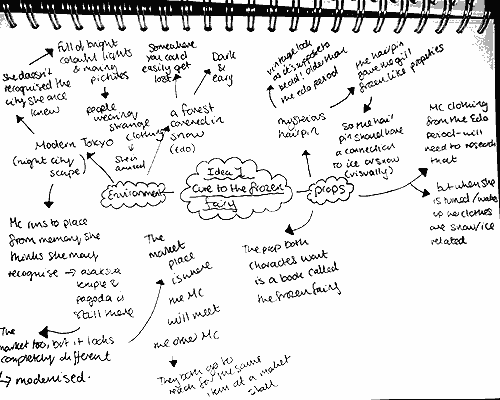
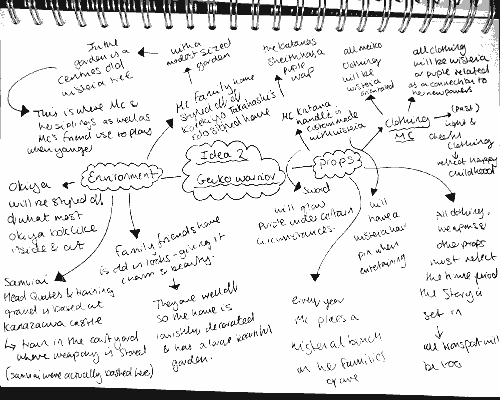
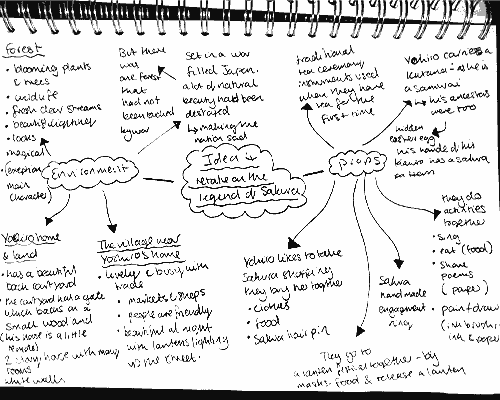
Idea 1 - Cure to the frozen fairy
Idea 2 - Geiko Warrior
Idea 4 - Retake on the Legend of sakura
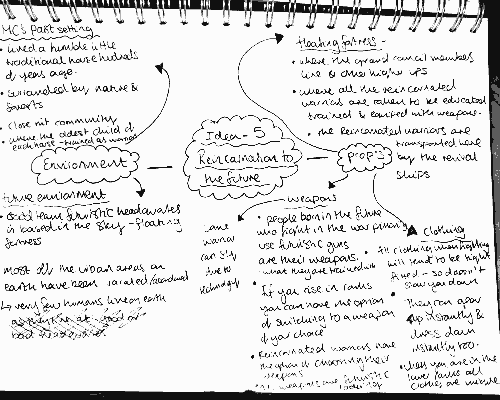

Idea 5 - Reincarnation to the future
Idea 6 - Princess peony
The scope
Environment & prop secondary research and visual material
Collecting a variety of reference images, for each script, allowed me to define and process what conceptual idea would work. As well as this, it would help me gather a look and feel for each script.
This process helps me to determine which ideas are viable to take to the next stage and which are not. In this case, I came to the conclusion that script 4 and 6 were only strong enough to take forward. Myself, as well as others, felt that the story behind scripts 1, 2 and 5 were not strong enough compared to 4 and 6. These scripts were not as detailed or as well thought out, potentially stifling the concept art in the later development stages.
The scope
Character and garment brainstorms
After shortlisting scripts 4 and 6, I could then start to think about character and garment design for each of these scripts.
I have more experience in character design than the other two areas, (environment and prop) so this is the part of the project where I really started to get excited and stuck in.
From these brainstorms I started to create a general idea of character personas, and how their clothing could reflect their personality and behaviour. Not only this, but I started to really think about how the characters would interact with one another, in a visual format, and how this matched up the corresponding script.
The scope

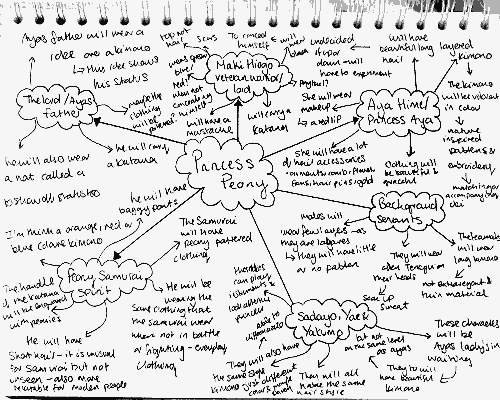
The legend of sakura character and garment brainstorm
Princess Peony character and garment brainstorm
The scope
Character and garnment secondary research and visual materials
Both of the scripts I took forward were based off of 2 japanese legends, therefore there was pre-exisiting materials I could collect to help me generate ideas for character and clothing.
But, this was a very small proportion of the secondary research I conducted for this area. Majority of the visuals I collected were based off of my representations of the characters that I had got from the scripts. I hoped that by collecting materials I thought were a true representation of the characters, would be doing these characters justice ,and stay true to the story that had been passed down through Japanese history.
The scope
Primary research photos from Japan
Japan has a long and prestigious history that comes with a culture unlike any other on earth.
Each year thousands of tourists flock to Japan to experience this for themselves, I have been lucky enough to do just that.
I have dressed and experienced just a small slice of what it was like to live when these legends were brought about, therefore, I felt that this research and knowledge combined would help aid me in the designing process.
The scope
Primary research on Japanese ukiyo-e print postcards
Being someone who has always been intersted in Japanese culture, I am aware that the Japanese have always tried to make anything into an art form and being an artist I have always appreciated art. The most commonly practiced and popular way of producing art hundreds of years ago, in Japan, was the Ukiyo-e print method.
I have an extensive collection of postcard Ukiyo-e prints and I thought that these pieces would help me to think about composition, as well as colour and the garments. After all, these prints were produced in an era that would be similar to my 2 scripts.
The scope
Concept artists that paint Japanese themed art
My role for this project is to produce concept art that will be set in historic Japan.
I decided to look into other artists that have already carried out and completed the same task as myself. I felt that this would help give me an indication and inspiration when it came to deciding mood, lighting, composition, colour, medium and style of my art.
The scope
The scope
Chosen story plot
After careful consideration, I decided to choose script number 4 (The legend of Sakura) as my chosen story plot.
I went with this script over the other as:
The script was longer ‐ Allowing me to produce more content as there was more text to put into a visual format.
Storyline preference‐ I was intrigued more by this script as this story did not have your generic happy ending. It is a beautiful story but differs from the norm of most story endings, making this script the more enticing out of the two. I believe this potentially will make more exciting art outcomes too, as a result.
A challenege ‐ This project is the larger out of the two because it has a larger script, but I want to challenege my capabilities and concept art knowledge, therefore pushing myself.
Environment variety ‐ The Princess Peony story is based in the Hime residence, therefore there wouldn't be as large a variety of environments I could paint. But, unlike the Princess Peony storyline, the Legend of Sakura story has a lot of different scenes with different enviroments.
The scope
Character Personas
From the character and garment design brainstorm, I was able to generate a rough idea of each characters personality and clothing. But, this was not be enough to help me define them, I needed more information before I could do that.
In order to create clothing that reflected each characters personality, I needed to understand indepth each characters background and how they fitted into the script.
I came up with personas for all the characters, these personas goes into detail about a characters background, age, gender, profession, ethnicity, hobbies and more.
This information later helped me to develop the characters final designs as well as the garments.
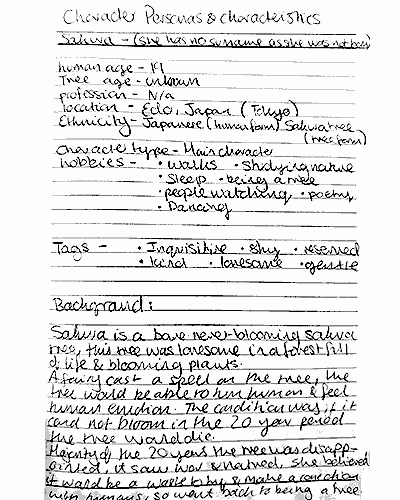
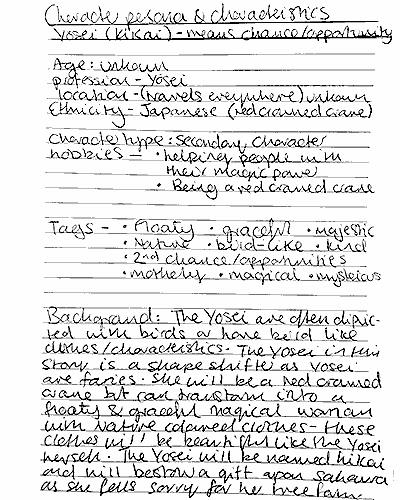
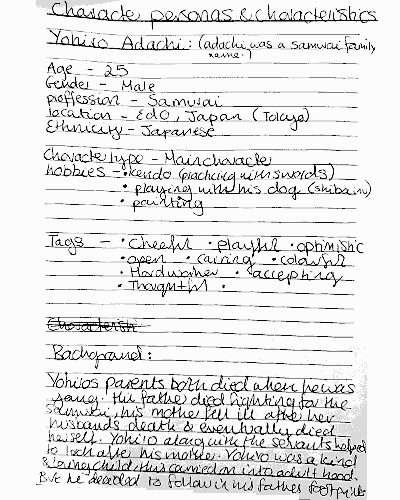
Character persona ‐ Sakura
Character persona ‐ Kikai
Character persona ‐ Yohiro Adachi
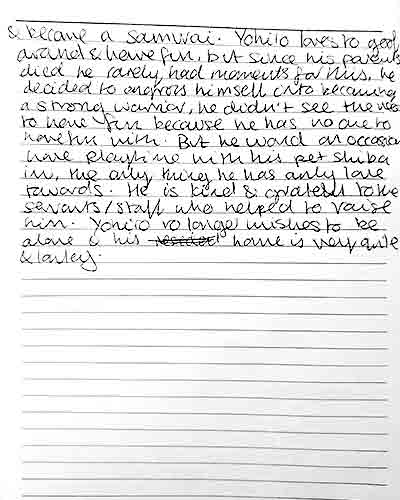

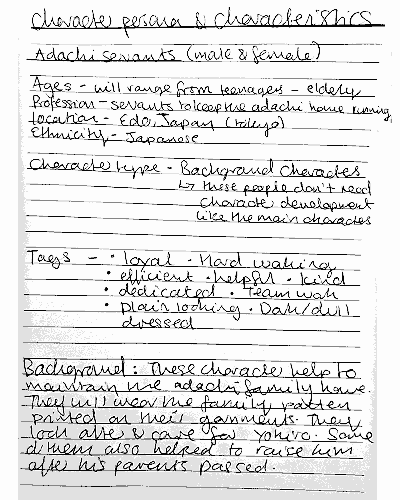
Character persona ‐ Yohiro Adachi
Character persona ‐ Shinobi assassin
Character persona ‐ Adachi servants
The scope
The scope
Character garment requirements
From the personas and visual research conducted, I knew what type of garments I wanted to dress the characters in. At this stage I had not decided on the patterns and style of the garments, but I knew the type, and how they generically looked.
I decided to list all the garments each character would be wearing, ready, for when it came to designing templates and patterns later.
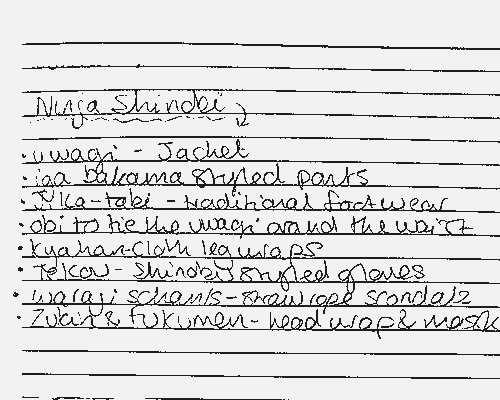
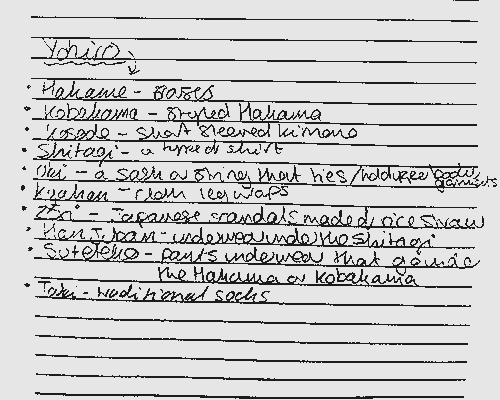

Shinobi garment requirements
Yohiro Adachi garment requirements
Sakura garment requirements
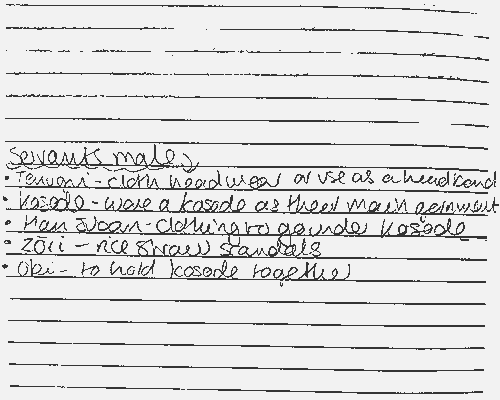
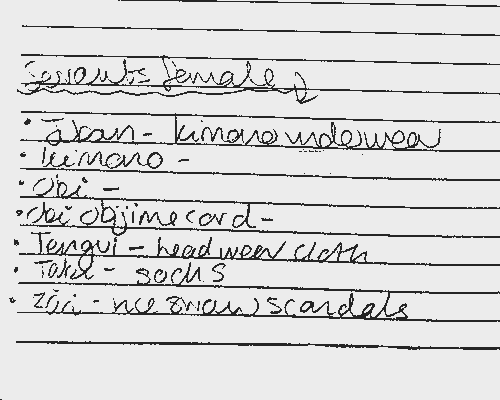
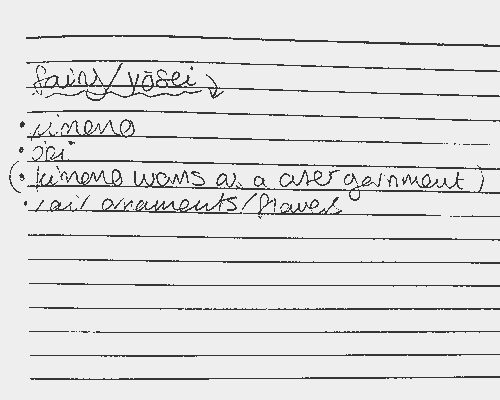
Adachi male servant garment requirements
Adachi female servant garment requirements
Kikai garment requirements
The scope
Garment pattern research and sketches
In Japan, there are still traditional patterns in fashion from hundreds of years ago. You can commonly find these patterns on clothing, accessories, homeware, banners and more.
Each of these traditional patterns has a meaning behind them and why an individual might wear them.
I wanted to discover their meanings and to see if any of the patterns could apply to my characters. So, I created a list of the most common patterns and the significance of them.
The scope
Character garment template designs
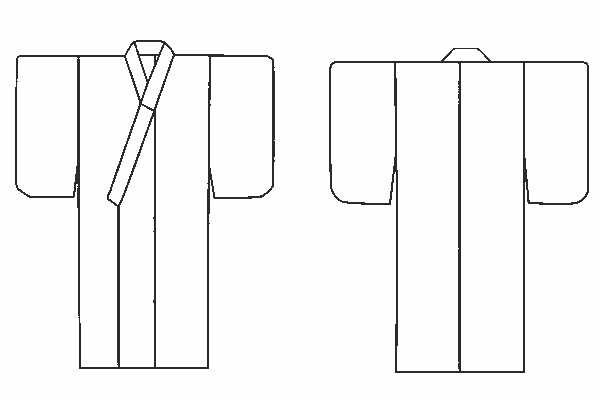
To start designing, custom garments with patterns, I needed a template to work on. These templates are the generic style of that particular garment, the style of the garment may change in later design stages, but at this stage it was about creating a garment design that fitted each character.
Garment template designs per character
Below you can see all the different template designs for all of the different garments I created.
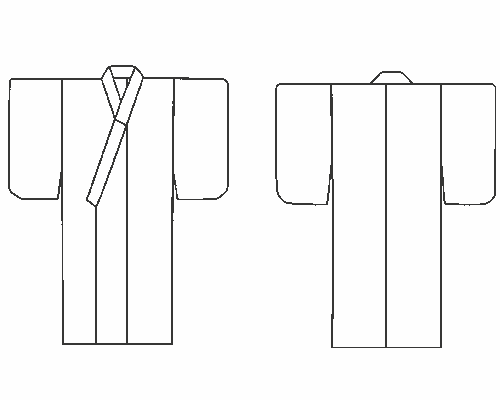
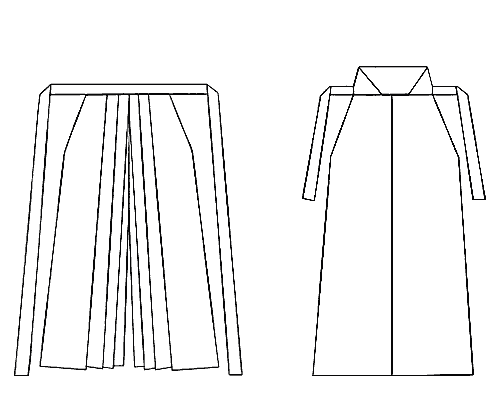
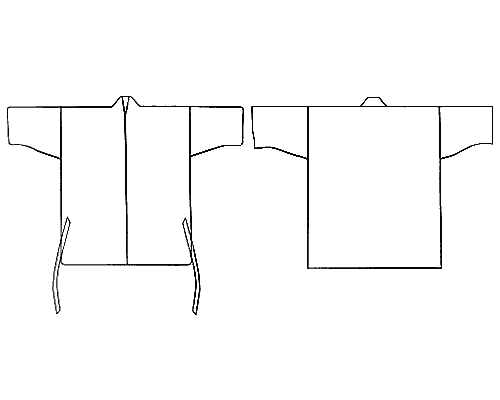
Template 1 - Kimono
Template 2 - Hakama
Template 3 - Shitagi
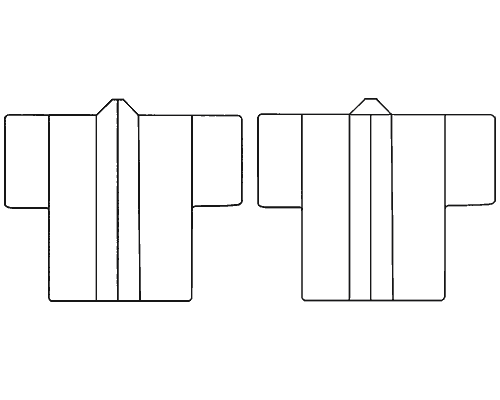
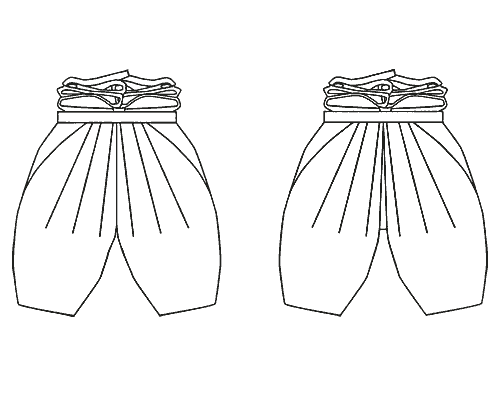
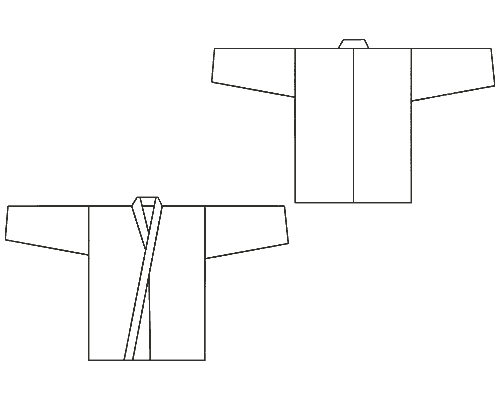
Template 4 - Haori
Template 5 - Kobakama
Template 6 - uwagi
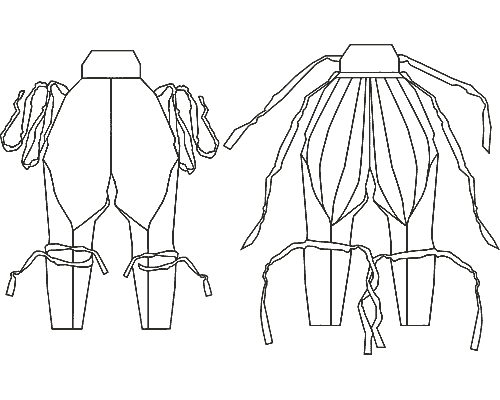
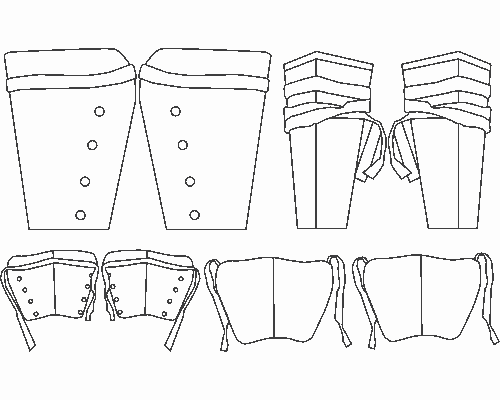
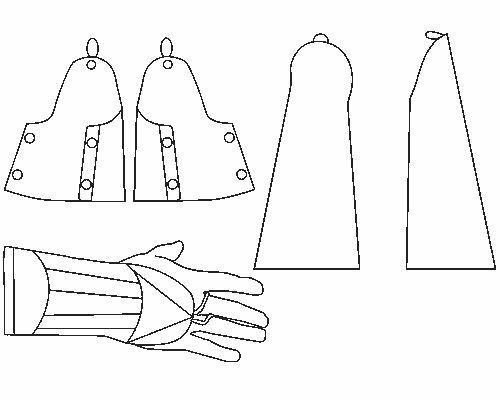
Template 7 - Iga bakama
Template 8 - Kyahan
Template 9 - Tekou
The scope
Garment pattern designs
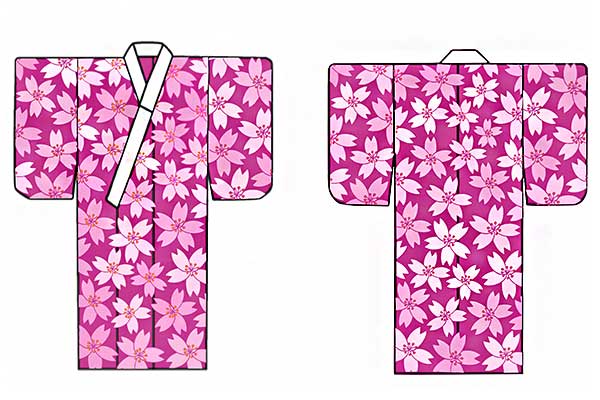
Once I had created all the generic garment templates, I was able to start designing patterns and the over all look of pieces.
This stage allowed me to get creative and experiment with different colour and patterns. I took into consideration the traditional patterns, as well as all the characters personalities, when designing.
The end result of this stage was final design garments, that I believe embodied the characters in some shape or form. You can see all of the different stages, of the garment designing process, for each of the characters below.






The scope
The scope
The scope
Character design and development





The scope
The Legend of Sakura character brand guidelines

The scope
The Legend of Sakura concept art story book
This concept art story book is the final result of all the work carried out for this project. This picture book consists of concept art, accompanied by matching text, that tells the ancient tale of ‘The legend of Sakura’.
From research, design studios look for an artist that can demonstrate a variety of different art styles, I too wanted to show that I can accomplish a variety of different art styles.

The scope
The Legend of Sakura supporting concept art and illustrations
I drew, sketched and painted several illustraions and concept pieces that helped me to visualise the characters better. I used these, alongside the character guidelines, as reference images to help me create the story concept art book.



